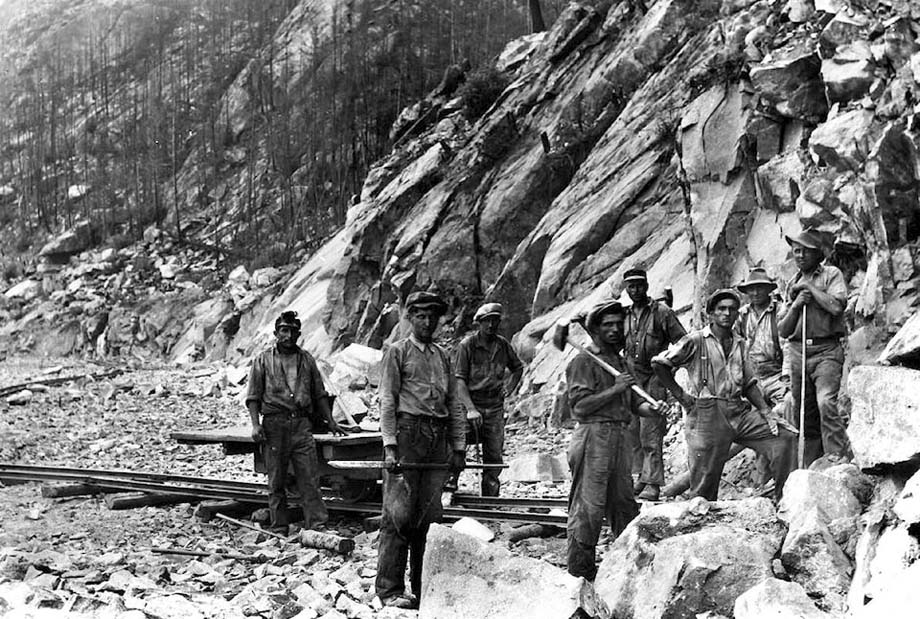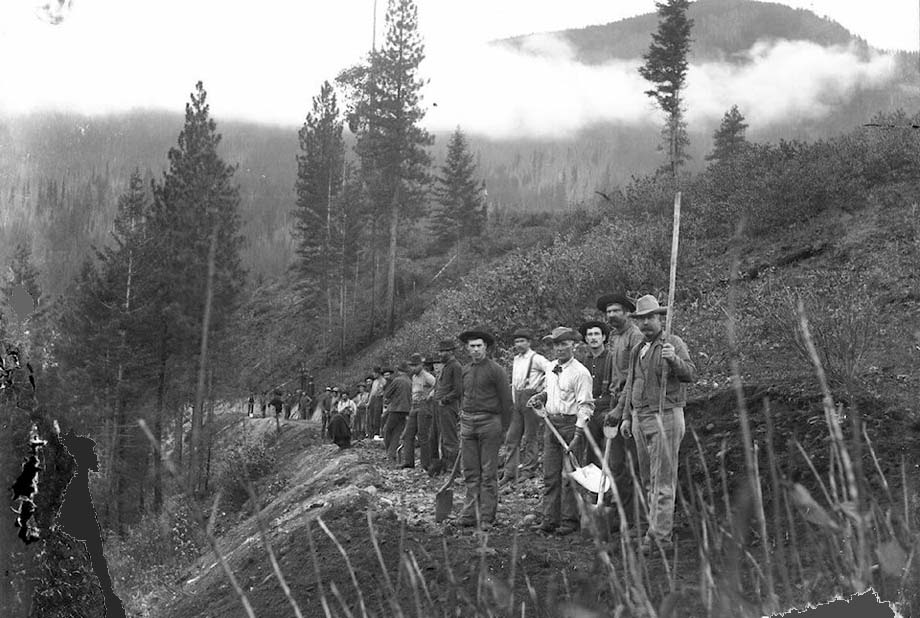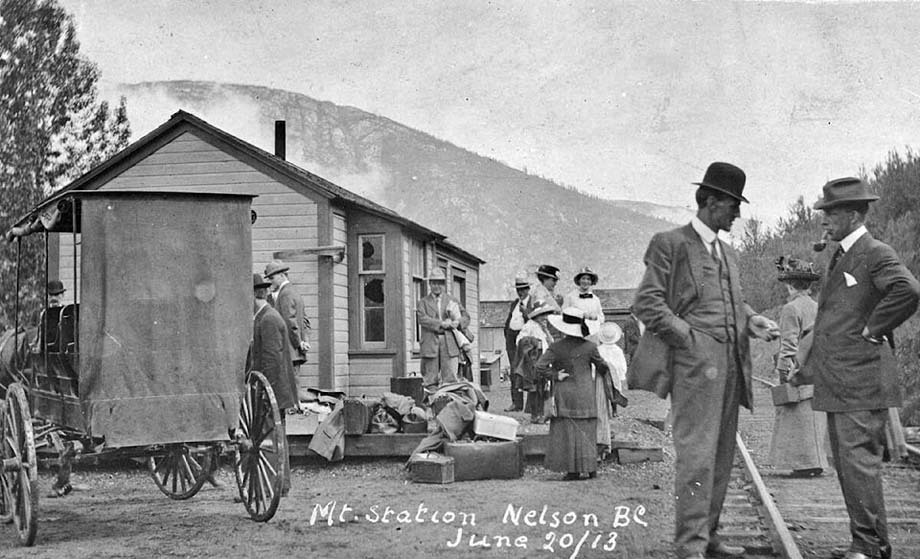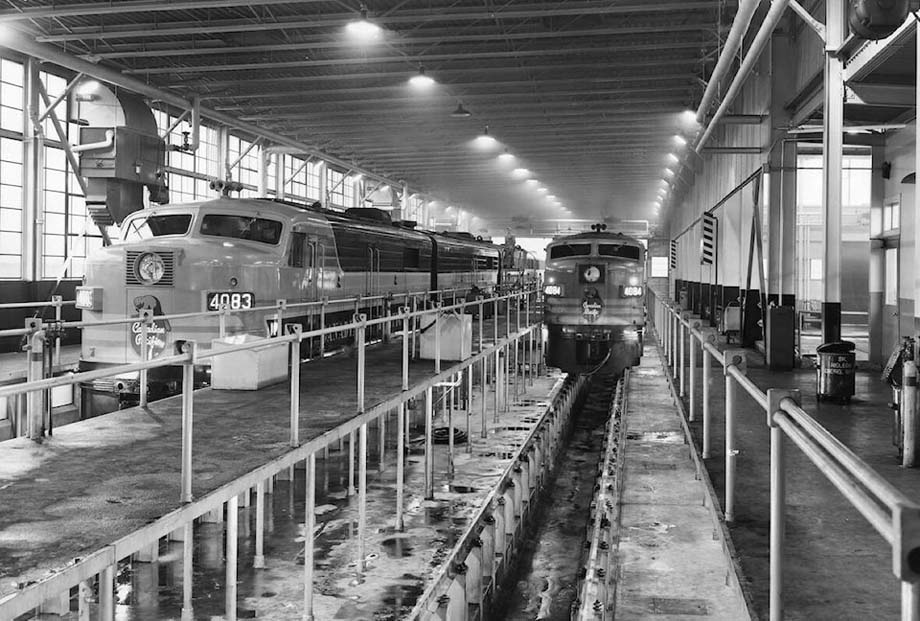
Nelson British Columbia - In the late 19th and early 20th centuries railways had a profound impact
on social, political, and economic life in the Kootenays.
The Canadian Pacific Railway (CP), and the Great Northern Railway (GN), operated almost all rail lines in the
Kootenays.
Their selections for stations, terminals, and workshops could make or break an urban centre.
Their shipyards built sternwheelers and tugs to transport products and people across lakes and rivers.
Their telegraph and express services revolutionized communication.
Nelson's first train station was built in 1891, but the most important event came in 1899 when CP announced it would
set up its divisional headquarters in Nelson.
CP took advantage of tax exemptions from the city and quickly constructed freight sheds, a turntable, a roundhouse, a
wharf, and a new station.
The station was built on the site of a Chinese-owned vegetable garden, and Cottonwood Creek was diverted for its
construction.

The railway companies became some of the city's biggest employers, and despite the decline of the area's mining
industry, were an important factor in allowing Nelson to maintain its population and position as a leading
transportation hub and economic centre in the West Kootenays.
By 1954 CP employed over 500 people in Nelson.
Former Nelson CP worker Jim Robertson remembers Nelson as a busy railway town.
"There could be 15 trains coming in during a morning from sites such as the Sullivan Mine in Kimberley," he
recalls.
"Chemicals and product was distributed in Nelson and sent on to locations like Trail Cominco, the pulp mill in
Castlegar, the mills in Midway and Grand Forks, or over to the Kootenay Forest Products plywood plant and sawmill that
existed in Nelson."

While the rail industry brought opportunity and prosperity to many in the Kootenays, there is also a dark side
to the story.
Railway construction workers laboured long hours with poor pay, crude equipment, and unsafe conditions.
Lice infestations were a persistent problem.
Diseases swept through labour camps, and without access to reasonable healthcare, many died.
A significant portion of railway workers across Canada were Chinese.
In 1891 Nelson's first newspaper, The Miner, reported that over 40 percent of the workforce building the Kootenay's
first railway between Sproat's Landing (near present day Castlegar) and Nelson were Chinese.
However, in the following years Chinese people were barred from working on the construction of many rail lines due to
government legislation and opposition from white workers.
First Nations and Metis communities were fundamentally impacted by railways, many railways in the region were built
along the extensive trail networks developed by indigenous nations.
Railways brought settlers looking to extract wealth from the natural landscape.
Wildlife patterns that indigenous people had lived in balance with for generations were dramatically
altered.
Huge land grants were provided to railway companies, including land that was not subject to treaties and had never been
ceded by First Nations communities.

"When we look at the impacts to the land, the impacts to indigenous people, the impacts to the water, the
impacts to the fish, suddenly, the railroad is not as romantic," says Sinixt Nation spokesperson Shelly Boyd,
reflecting on some of the negative impacts of railway history.
"It doesn't have that same feel. And I think as human beings it is important for us to look at what we are taking.
Every time we are taking something, we are changing something, we are moving something else. And we have a
responsibility to be aware of this."
Although railways remain important for freight transportation, the network of sternwheelers, tugs, and rail passenger
services are gone.
A mixed legacy of land ownership issues, displacement, heritage buildings, attractions, environmental damage, and rail
trails remain.
Jean-Philippe Stienne.
 Well... reading that leaves me with a negative feeling about life.
Has the author considered all the benefits we now take for granted made possible by the railways? For
example, just look at the food on your table. Canadian grain feeds the world, and it moves by the railways.
Well... reading that leaves me with a negative feeling about life.
Has the author considered all the benefits we now take for granted made possible by the railways? For
example, just look at the food on your table. Canadian grain feeds the world, and it moves by the railways.
(likely no image with original article)
(usually because it's been seen before)
provisions in Section 29 of the
Canadian Copyright Modernization Act.
